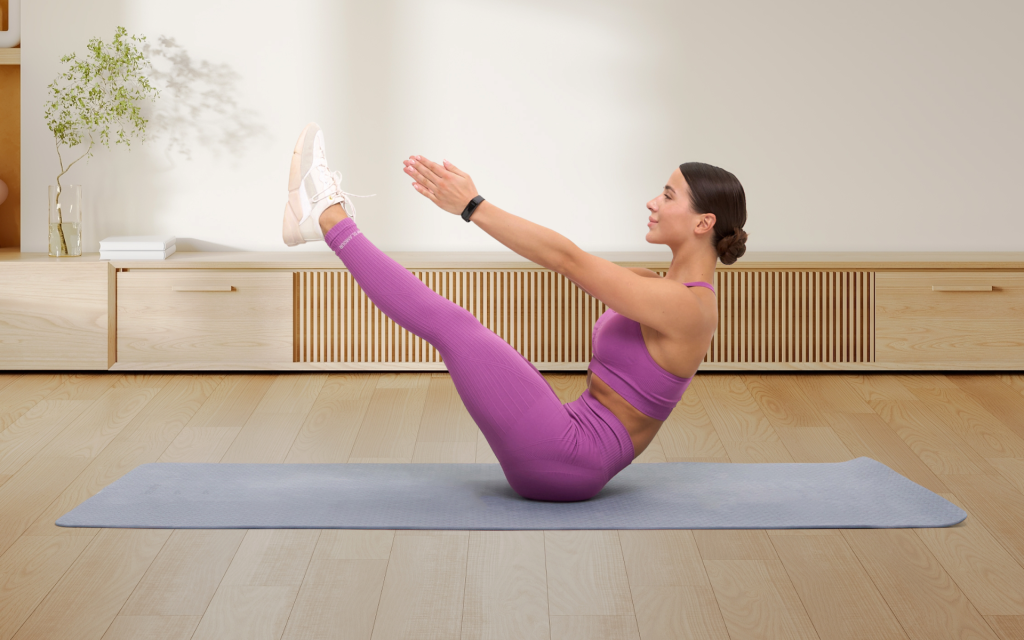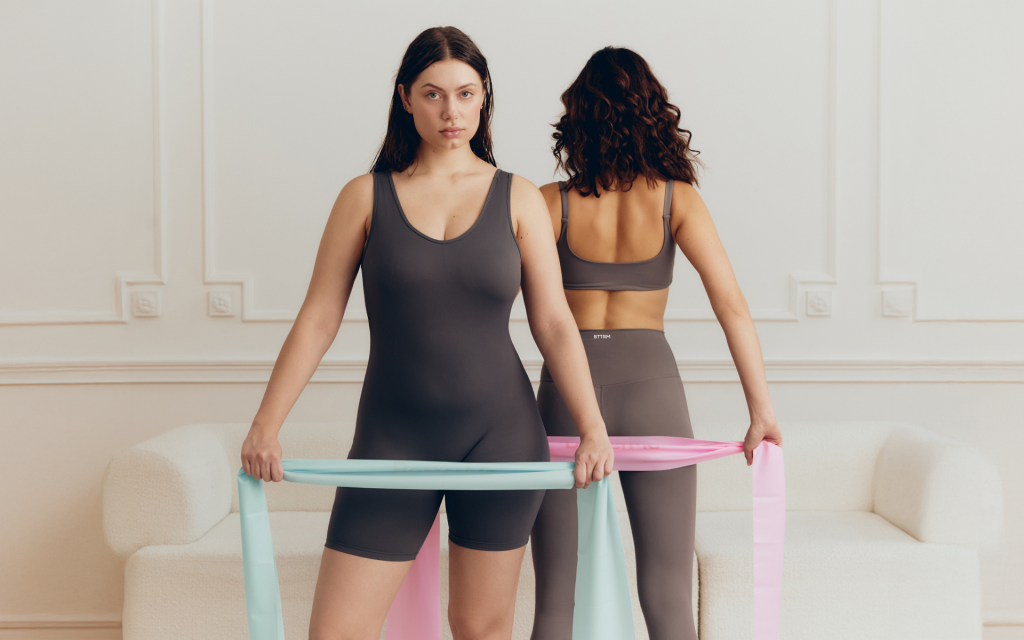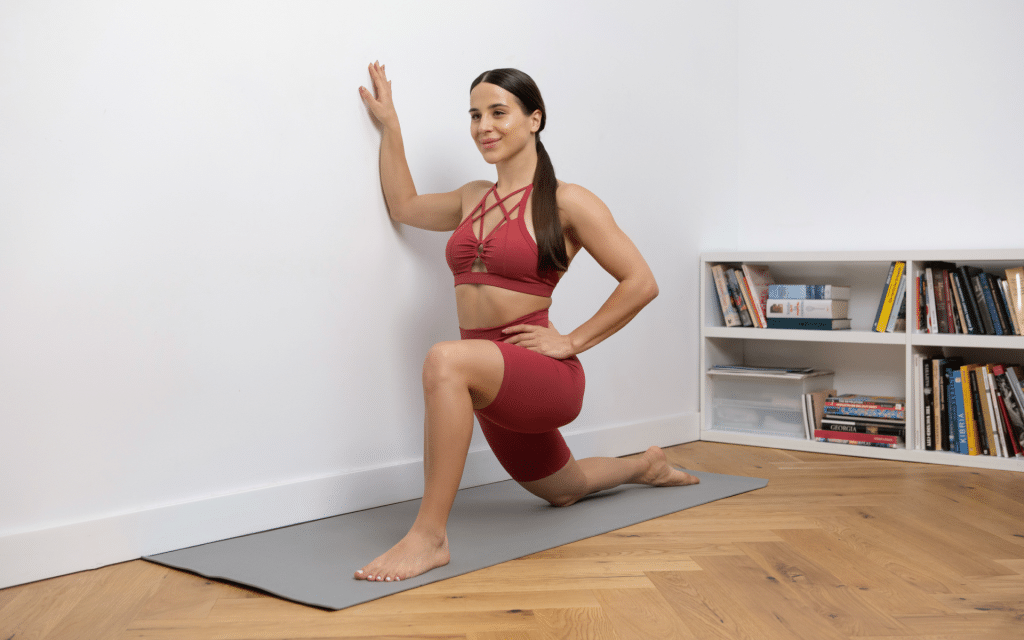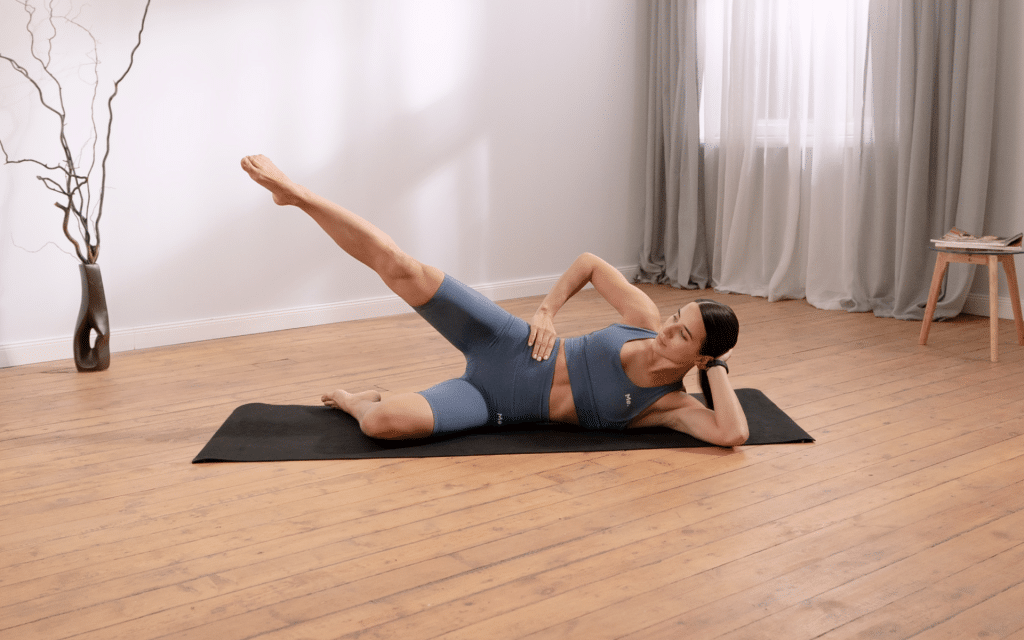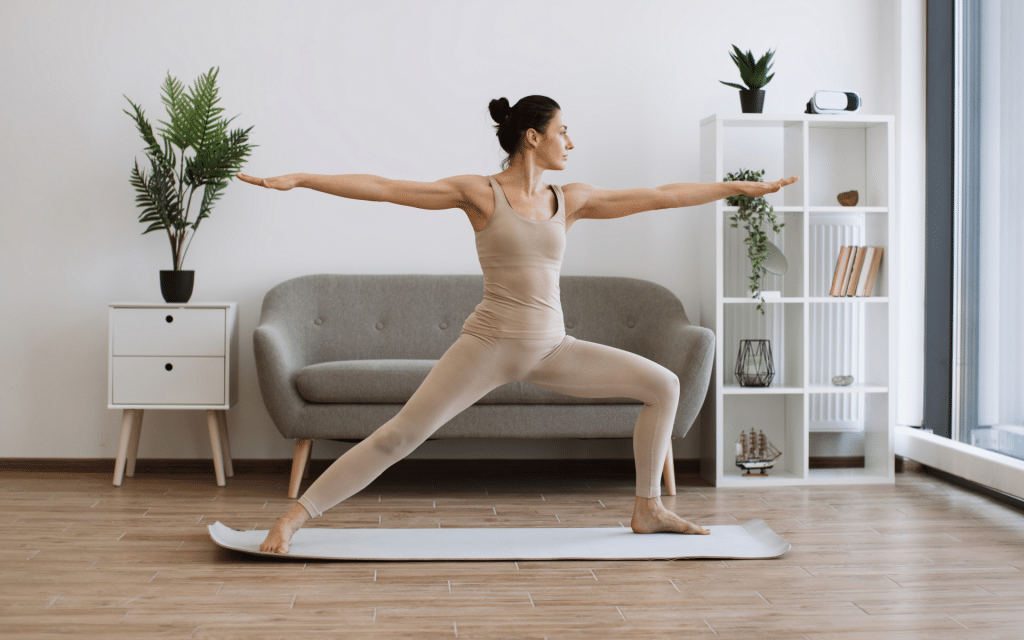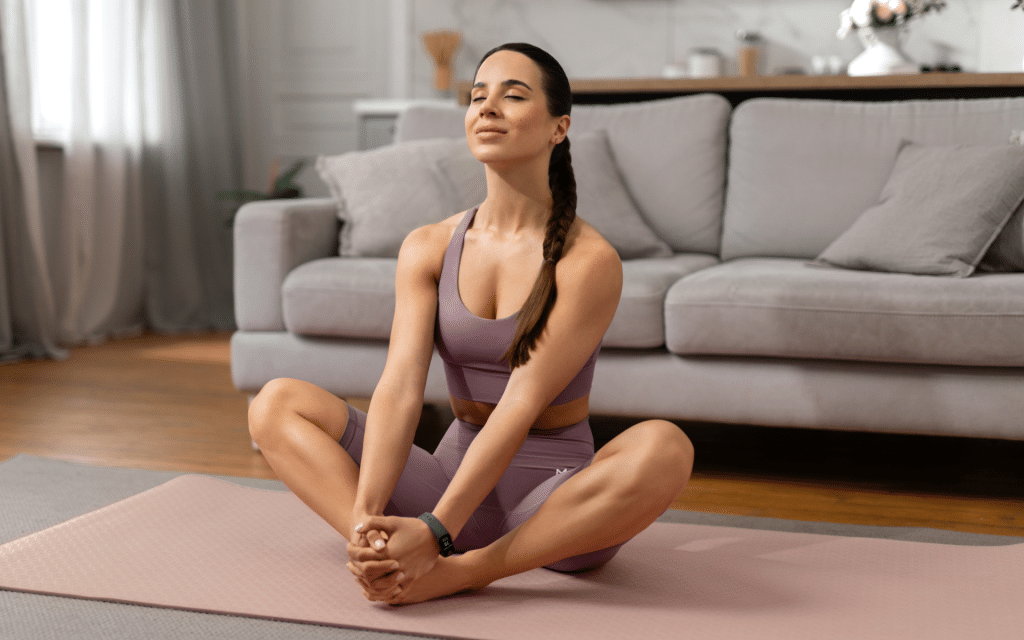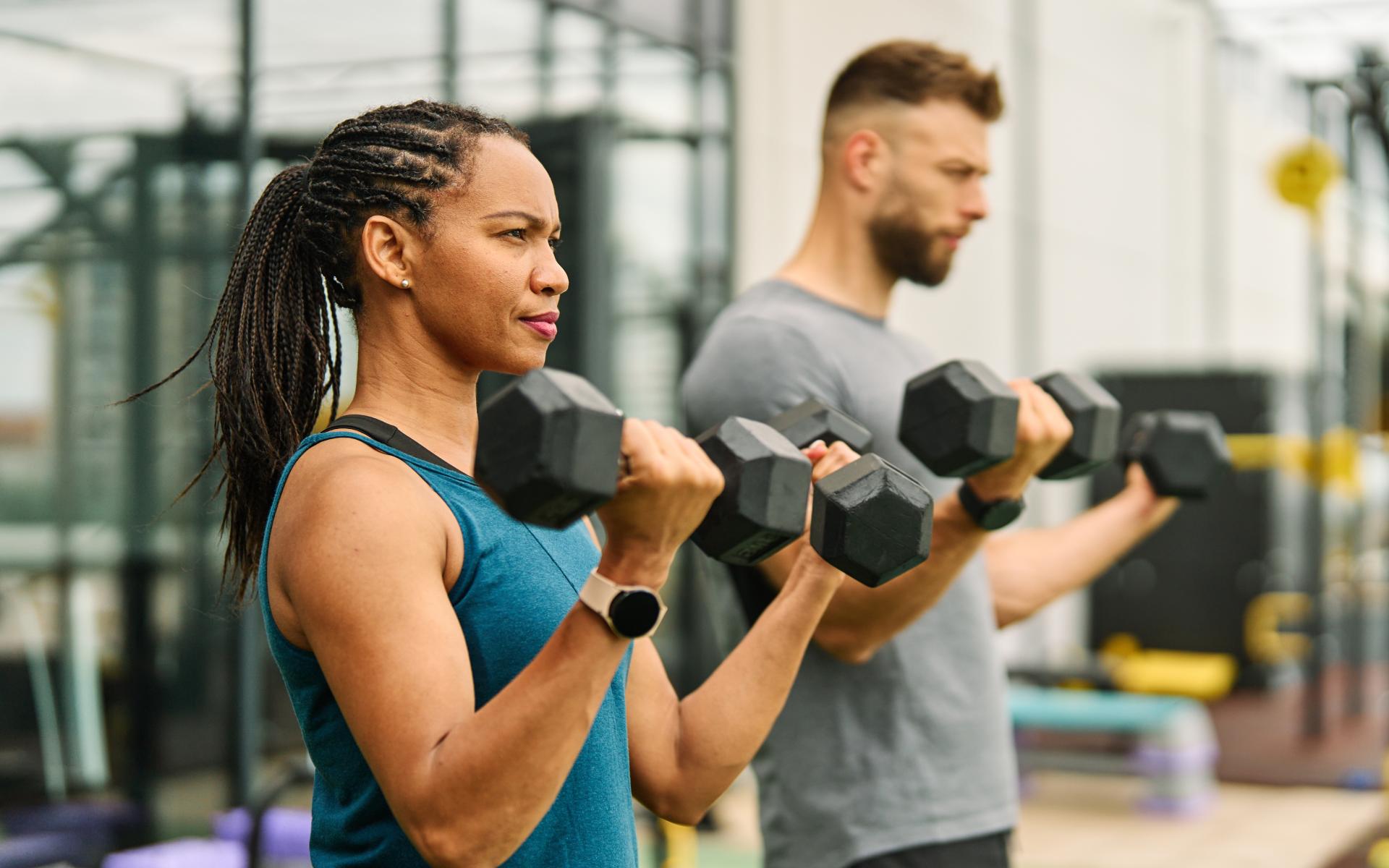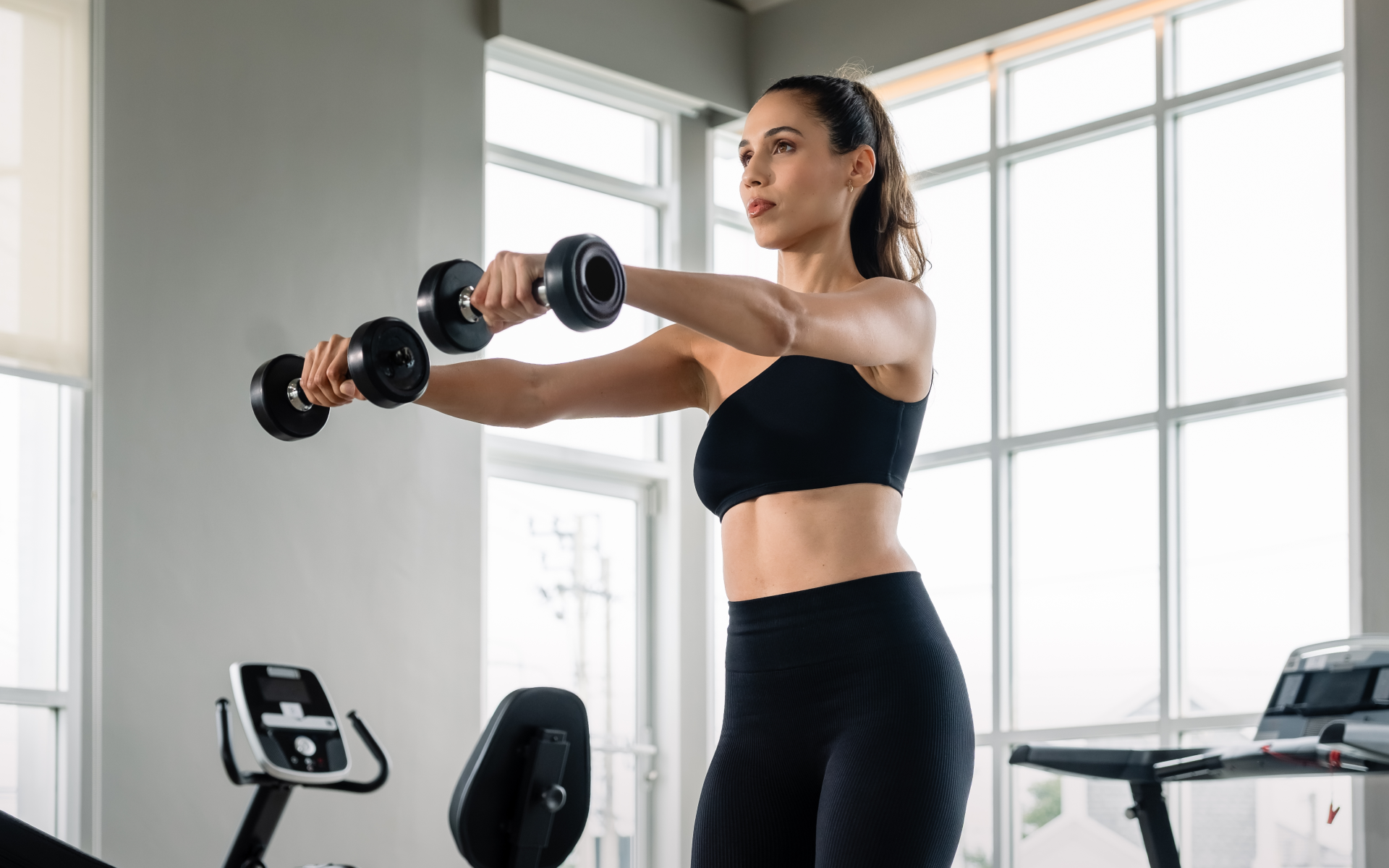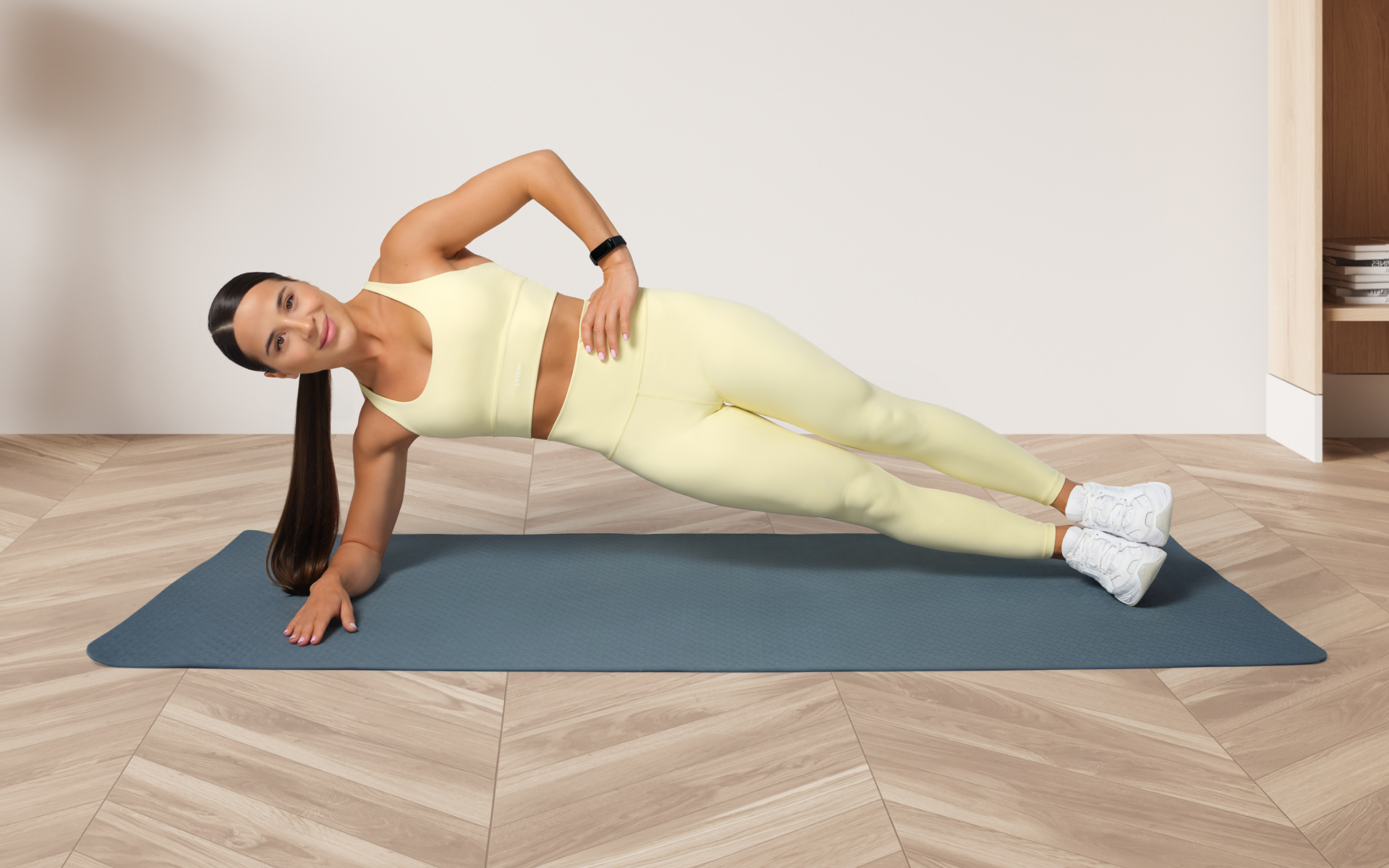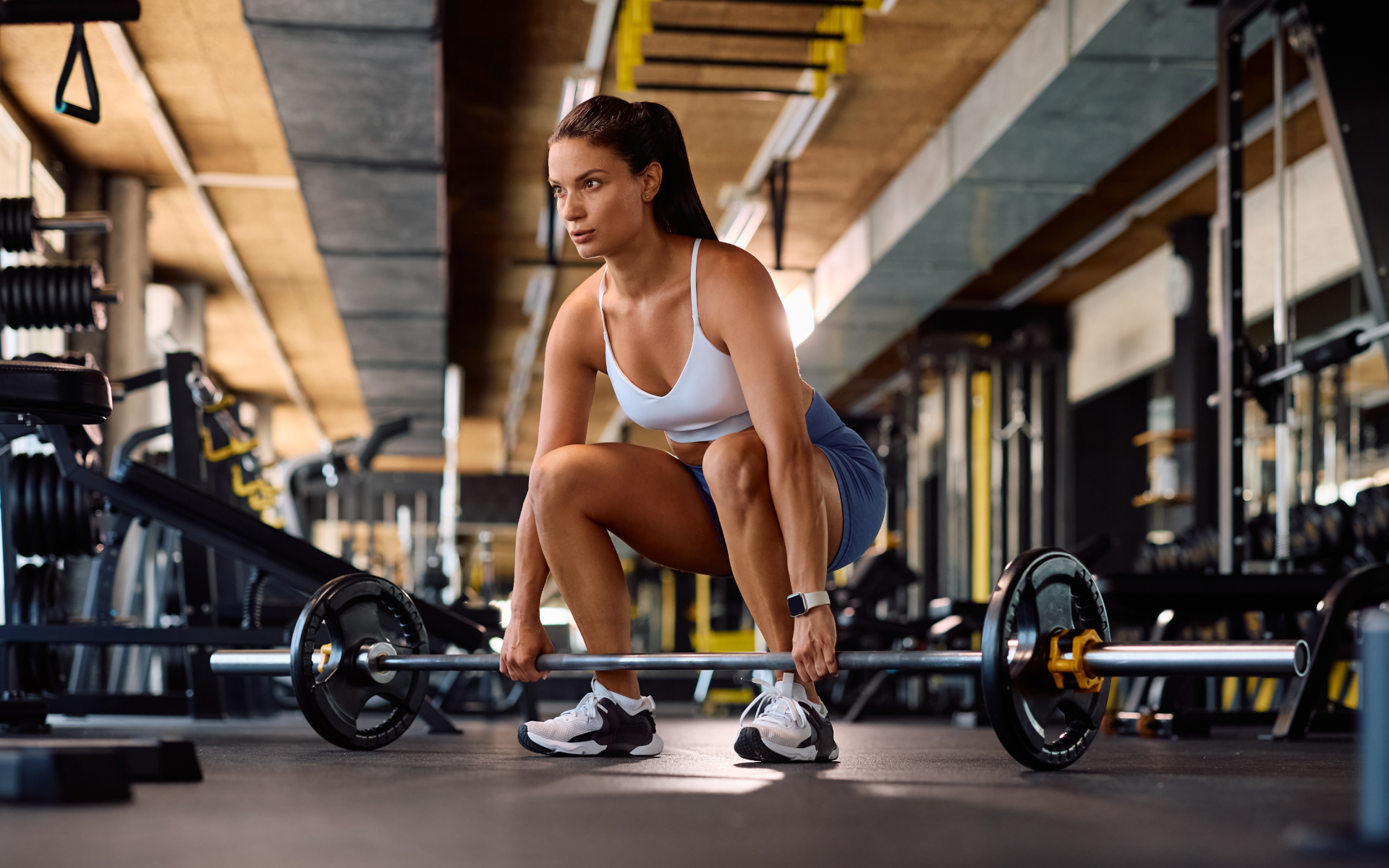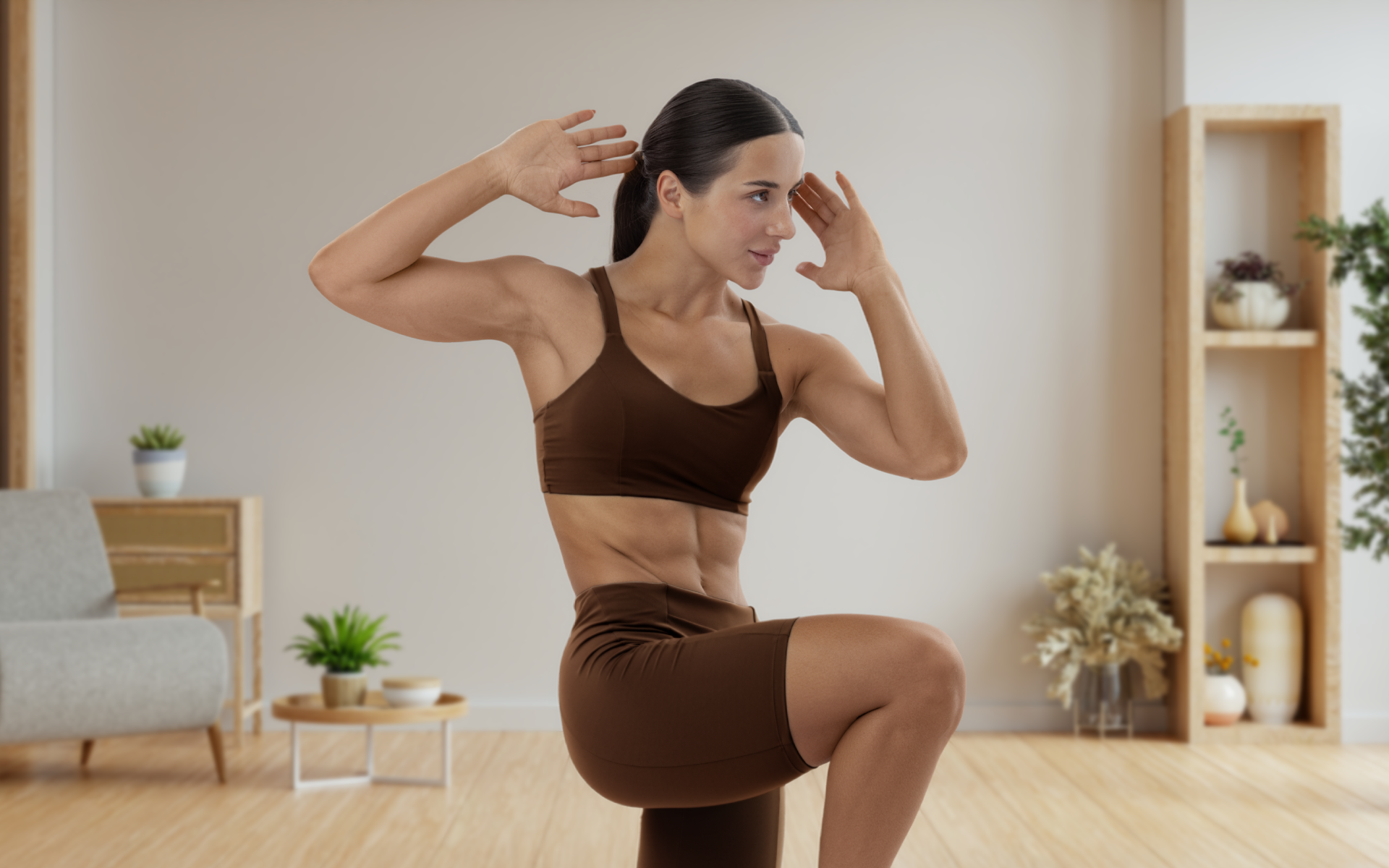Mornings can be a whirlwind. Between getting ready for work, managing family responsibilities, and tackling that endless to-do list, finding time to exercise often feels impossible. The hustle and bustle have led many busy people to ask, “What is a quick morning workout plan?”
Since a morning workout routine at home or the gym can seem far-fetched most days, it’s no wonder many people write it off before the day even begins.
But here’s the good news: a workout doesn’t need long hours to be effective.
Research suggests that even short bursts of physical activity can:
- Improve your health
- Sharpen your focus
- Boost energy
You’re not alone if you struggle to find a quick morning workout at home with an already packed schedule. The key is to simplify the process.
With the right approach, you can knock out a quick, efficient workout in just a few minutes and still see benefits.
Here are 3 research-backed morning workout ideas designed to fit even the tightest timeframes.
Is It Good To Do A Quick Workout In The Morning?
There are various morning workout benefits.
A quick workout, combining strength and dynamic movements, can deliver health benefits without eating into your schedule. Research shows daily movement can still meet physical activity guidelines, even in shorter sessions (1, 2).
Here are some reasons why a quick morning workout may be worth doing:
- Better Energy And Focus
Exercise increases blood flow throughout your body, including to the brain.
This blood flow increase creates a temporary boost in oxygen and nutrients, which can improve alertness and mental clarity (3).
Morning movement may help you shake off grogginess by stimulating endorphins, the “feel-good” chemicals that can enhance mood (4). Even a quick 5-10 minute session can have these effects.
- Improved Consistency
Morning workouts often face fewer interruptions compared to exercising later in the day.
Evening plans or unexpected commitments may derail workouts scheduled for later, especially if you’re tired. Starting your day with a short, intentional workout can build a consistent routine, setting the tone for long-term adherence to physical activity.
- Promotes Better Metabolic Function
Exercise activates your muscles, which temporarily increases insulin sensitivity.
This increased insulin sensitivity means your body processes blood sugar more effectively, helping stabilize energy levels (5).
For some individuals, particularly those who are overweight, morning activities may also “prime” the metabolism, helping you burn calories more efficiently throughout the day (6).
A quick morning workout for weight loss is possible. However, the impact can vary based on total exercise duration and intensity.
- Potential Sleep Benefits
Evidence suggests that morning exercise can positively influence sleep-wake cycles (7).
Exposure to light during early physical activity helps regulate your circadian rhythm, your internal “body clock” (8). Regulating the circadian rhythm can result in better sleep quality at night.
Keep in mind, though, not everyone will notice significant changes in sleep patterns after morning workouts.
- Builds A Positive Habit Loop
Completing a morning workout delivers a sense of accomplishment, no matter how short. That small win can motivate healthier daily decisions, such as eating nutritious meals or staying active. Over time, this creates a cascading effect, reinforcing self-discipline and healthy habits.
Read more: Walking 15 Minutes A Day Is Good For You And Here’s Why
Is A 10 Minute Workout In The Morning Enough?
The idea of squeezing in just 10 minutes of exercise might seem underwhelming.
For general health, it can be an effective stepping stone (9). It may complement longer sessions later in the day for more advanced fitness or aesthetic goals.
But you can create lasting change by focusing on small, consistent progress every day.
A short morning workout may not seem like much, but those minutes add up over a week, month, or year. The compounding effect of regular effort often leads to noticeable results.
Think of it this way: 10 minutes of daily movement equals over 1 hour of weekly exercise.
You can spend that time improving strength, boosting flexibility, or enhancing cardiovascular health. While each session might feel small, the cumulative impact can be significant.
BetterMe: Health Coaching app helps you achieve your body goals with ease and efficiency by helping to choose proper meal plans and effective workouts. Start using our app and you will see good results in a short time.
Understanding The Physical Activity Guidelines
Knowing whether 10 minutes is “enough” helps to understand the current recommendations.
Physical activity guidelines for adults suggest:
- At least 150 minutes of moderate-intensity aerobic activity per week.
- Alternatively, 75 minutes of vigorous activity can meet the mark.
- Strength training involving major muscle groups twice a week (10).
The good news? You can meet these markers in smaller chunks.
Research has shown that exercise doesn’t need to happen simultaneously to be effective. Accumulating movement throughout your day—even in increments as short as 10 minutes—can contribute to better health over time (2, 11).
Realistic Expectations Of Short Workouts
While 10 minutes can deliver health benefits, aligning expectations with reality is the most significant aspect.
A 10-minute workout may not dramatically transform fitness levels, especially if your sessions are low intensity. But it can serve as a starting point.
It builds the habit of moving regularly, which may inspire longer or more intense bouts of exercise later.
Short workouts can also:
- Improve mood
- Enhance blood flow
- Support joint mobility (12).
These immediate benefits make them a worthwhile addition to your routine, even if they don’t immediately change your overall fitness baseline.
What Is The Best Quick Morning Workout?
Short, targeted workouts are a practical way to support your fitness goals, even with a busy schedule. Below are 3 quick morning workouts, each designed to address a different aspect of fitness. We outlined these schedules with detailed steps for all exercises to ensure clarity and ease of execution.
1. 10-Minute Mobility Session For Flexibility And Joint Health
Mobility exercises focus on actively moving your joints through their full range of motion.
Regular practice supports flexibility, reduces stiffness, and helps prevent injury (13).
This session is ideal if you spend much of the day sitting or working in static positions.
Schedule:
- 1 Minute: Cat-Cow Stretch
- 2 Minutes: Arm Circles
- 2 Minutes: Clamshells
- 3 Minutes: World’s Greatest Stretch
- 2 Minutes: Deep Squat Hold with Ankle Mobility
Cat-Cow Stretch:
- Begin on your hands and knees in a tabletop position, wrists stacked under shoulders and knees under hips.
- Breathe in as you arch your back, dropping your belly toward the floor and lifting your head and tailbone upward (Cow Pose).
- Breathe and reverse the motion by tucking your chin to your chest, rounding your back, and drawing your belly button toward your spine (Cat Pose).
- Move fluidly between these two positions, inhaling as you move into Cow Pose and exhaling into Cat Pose.
Arm Circles:
- Stand tall with your feet hip-width apart and arms extended straight to the sides at shoulder height.
- Make small, controlled circles forward for 30 seconds.
- Reverse the direction and make small circles backward for another 30 seconds.
Clamshells:
- Lie on your side with your legs stacked and bent at 90 degrees, supporting your head with one hand.
- Keep your feet together and lift your top knee as high as possible without moving your pelvis or lower back.
- Slowly lower the knee back down and repeat. Switch to the other side after 1 minute.
World’s Greatest Stretch:
- Start in a high plank position with your hands directly under your shoulders.
- Step your right foot to the outside of your right hand, extending your back leg.
- Drop your left knee to the floor for support and twist your torso, reaching your right hand toward the ceiling.
- Return your hand to the floor and switch sides. Perform for the full 3 minutes, alternating legs.
Deep Squat Hold With Ankle Mobility:
- Stand with your feet slightly wider than hip-width apart and toes pointing slightly outward.
- Lower into a deep squat, keeping your chest lifted and heels firmly on the ground.
- Rest your elbows on your knees and gently shift your weight side-to-side to mobilize your ankles.
- Hold this position for up to 2 minutes, breathing deeply throughout.
2. Bodyweight Circuit For Strength And Endurance (30 Minutes)
This workout combines bodyweight movements to build strength, endurance, and stability (14). It’s highly adaptable, making it suitable for all fitness levels.
Schedule:
Complete the following circuit 6 times, performing each exercise for 1 minute.
Rest for 30 seconds between rounds.
- Push-Ups
- Bodyweight Squats
- Plank to Shoulder Tap
- Jumping Jacks
- Glute Bridges
Push-Ups:
- Start in a high plank position with your hands slightly wider than shoulder-width apart.
- Engage your core and keep your body straight from head to heels.
- Lower your chest toward the floor by bending your elbows, keeping them at a 45-degree angle to your body.
- Press through your palms to return to the starting position.
Bodyweight Squats:
- Stand with your feet shoulder-width apart and toes pointing slightly outward.
- Lower your hips down and back as if sitting into a chair, keeping your chest lifted and knees tracking over your toes.
- Push through your heels to return to standing.
Plank To Shoulder Tap:
- Begin in a high plank position with your shoulders over your wrists.
- Engage your core to stabilize your hips as you lift one hand and tap the opposite shoulder.
- Alternate sides, keeping your movements controlled and your torso steady.
Jumping Jacks:
- Stand tall with your feet together and arms at your sides.
- Jump your feet out to shoulder-width apart as you raise your arms overhead.
- Jump your feet back together, lowering your arms. Repeat fluidly.
Glute Bridges:
- Lie on your back with your knees bent and feet flat on the floor, hip-width apart.
- Press through your heels and lift your hips toward the ceiling, squeezing your glutes at the top.
- Lower your hips back down with control and repeat.
3. High-Intensity Interval Training (HIIT) For Cardio And Fat Burning (30 Minutes)
HIIT alternates between intense effort and recovery periods. It’s a time-efficient way to improve cardiovascular fitness and burn calories (15).
Schedule:
Perform the following exercises for 30 seconds each, followed by 30 seconds of rest.
Complete 15 rounds for a total of 30 minutes.
- High Knees
- Burpees
- Mountain Climbers
- Skater Jumps
High Knees:
- Stand tall with your feet hip-width apart.
- Quickly drive one knee toward your chest while pumping the opposite arm.
- Switch sides in a running motion, keeping your core engaged and your pace brisk.
Burpees:
- Stand upright with your feet shoulder-width apart.
- Drop into a squat and place your hands on the floor before you.
- Jump your feet back into a high plank position.
- Perform an optional push-up, then return to the squat position.
- Explode upward into a jump, reaching your arms overhead.
- Repeat
Mountain Climbers:
- Begin in a high plank position with your shoulders stacked over your wrists.
- Drive one knee toward your chest, then quickly switch legs in a running motion.
- Maintain a steady rhythm, keeping your hips level and core engaged.
Skater Jumps:
- Start in a slight squat position with your feet hip-width apart.
- Leap laterally to the right, landing softly on your right foot and bringing your left leg behind you.
- Push off with your right foot to leap laterally to the left. Repeat fluidly, as if “skating.”
What Is The 5 5 5 30 Morning Workout?
The “5 5 5 30” morning workout isn’t a widely recognized or standardized concept in exercise science, but it has become a term some individuals use to describe structured short-format workouts.
The framework consists of 4 components, typically structured as follows:
- 5 Minutes of Warm-Up
- 5 Minutes of Strength Training
- 5 Minutes of Cardio
- 30 Seconds of Rest Between Sections
While the 5 5 5 30 morning workout isn’t a magic formula, it serves as a practical approach for fitting movement into a busy schedule.
It incorporates well-supported exercise elements, like warming up, strength training, and cardio, into a compact routine. If you’re seeking structure, it’s a convenient method to get moving and fits a morning exercise routine for beginners at home.
However, whether this method works for you would depend on how it aligns with your fitness goals and abilities. If you want to improve overall health, this framework offers a doable morning workout routine for beginners.
You may need longer sessions or higher intensity over time for more advanced goals.
Can I Exercise Immediately After Waking Up?
Exercising first thing in the morning can work for some, but not everyone.
Whether it’s a good choice depends on how your body responds and your routine.
Your body is in a “dormant” state when you wake up.
Core temperature is lower, and your muscles and tendons may feel less ready for dynamic movements because blood flow is still catching up (16).
However, this doesn’t necessarily mean you’re at risk of stiffness or reduced function.
Gentle physical activity is often enough to help your body transition to a more active state.
Morning workouts also support other benefits. They help regulate your circadian rhythm and set a positive tone for the day (17).
No evidence states that morning exercise increases injury risk, provided you include a warm-up and perform movements correctly.
When It Might Be Ideal:
- Limited Time Later in the Day: If mornings are your only chance to exercise, getting it done early supports adherence to a routine.
- Improved Focus and Energy Boost: Light to moderate exercises like walking, cycling, or yoga can wake up the body and jumpstart your energy.
- Consistency: Morning exercisers often report sticking to their plans better than those working out later.
Reasons why BetterMe is a safe bet: a wide range of calorie-blasting workouts, finger-licking recipes, 24/7 support, challenges that’ll keep you on your best game, and that just scratches the surface! Start using our app and watch the magic happen.
When It Might Not Be Ideal:
- Demanding or Intense Workouts: Heavy strength training or high-intensity cardio might not feel comfortable without a proper warm-up in the morning.
- Low Energy Levels: Fasting overnight can deplete energy stores for more intense efforts. Consider a quick snack before starting.
- Mental or Physical Resistance: If you find it challenging to move immediately upon waking, forcing a morning workout may harm your motivation.
How To Adapt To Morning Workouts
An adequate warm-up can make all the difference if you work out right after waking.
Spend 5-10 minutes doing dynamic stretches or light cardio to wake your body gently.
For example, shoulder rolls, hip circles, or a brisk walk can help increase circulation and range of motion.
A small, easy-to-digest snack like a banana can boost energy for moderate or intense sessions. Staying hydrated is crucial (18).
Read more: At-Home Workout For Abs: 3 Basic Exercises To Do
Can I Workout After Waking Up Without Eating?
Exercising on an empty stomach, known as fasted exercise, is neither inherently better nor worse than working out in a fed state.
The idea is to leverage the body’s overnight fasting state to enhance fat burning.
Whether this fasting approach suits you depends on your goals, fitness level, and how your body responds.
What Happens During Fasted Exercise?
When you wake up, your body has been fasting for several hours.
Glycogen, the body’s primary energy source, is partially depleted (19).
This depletion encourages the body to rely more on fat stores for energy during moderate-intensity workouts.
However, this doesn’t mean glycogen is unavailable.
Your body still uses a mix of carbohydrates and fats for energy, but at different proportions based on the intensity of the workout.
For short, high-intensity efforts, your body heavily depends on glycogen (20), which might make fasted exercise challenging.
What Does The Research Say?
- Fat Metabolism May Be Slightly Higher
Studies suggest fasted exercise can increase fat oxidation during the workout (21).
This benefit makes it appealing to those aiming to lose body fat.
However, the long-term impact on fat loss is unclear. Fat burning during a workout doesn’t always translate to greater fat loss overall, as total energy balance (calories in versus calories out) remains the primary driver of body composition.
- Your Performance May Be Affected
Exercising while fasted may not increase performance during high-intensity or prolonged activities. Without readily available glycogen, your muscles may fatigue faster (22). Eating beforehand may improve performance and recovery for endurance athletes or those focusing on strength.
- Consider Muscle Preservation
Research indicates fasted training may increase the breakdown of proteins for energy, particularly during prolonged or intense sessions (23).
This breakdown could affect muscle preservation without supporting protein synthesis through post-workout nutrition.
- There Is A Hormonal Response
Fasted exercise can elevate catecholamines (adrenaline and noradrenaline) levels, which support fat mobilization. It may also increase growth hormone levels (24). However, the significance of this for muscle building or fat loss remains debated.
When It Might Be Beneficial
- Fat Oxidation Focus: If you aim to train your body to use fat more efficiently as fuel, low to moderate-intensity fasted workouts could help.
- Time Efficiency: If you’re short on time in the morning, skipping a meal can make it easier to fit in a workout.
- Individual Preference: Some feel light and energized working out without food, particularly for non-demanding exercises like walking or a morning chair workout.
When It Might Not Be Ideal
- Intensity and Performance Goals: High-intensity workouts demand glycogen. Without it, performance and endurance may suffer.
- Low Energy Levels: Exercising might be ineffective or unenjoyable if you feel weak or sluggish in a fasted state.
- Muscle Growth Objectives: Resistance training on an empty stomach may impact muscle-building potential if individuals do not adequately address protein breakdown post-workout.
Practical Considerations
If you decide to work out fasted, make sure to stay hydrated.
Your body loses fluid overnight, which can affect both performance and recovery.
After the workout, prioritize a nutrient-rich meal to replenish glycogen stores, support muscle repair, and aid recovery. A mix of carbohydrates, protein, and healthy fats works well (18).
For those who find fasted exercise challenging, a small, easily digestible snack such as a banana or toast may significantly improve your energy without delaying your workout.
Yes, any movement is better than none. Light activities like stretching, walking, or a few bodyweight exercises can benefit your circulation, mood, and mobility. Consistency guarantees that you’ll reap many benefits over time. Yes, but it depends on the intensity of your workout and the size of your meal. You can work out 30 minutes after a small meal for moderate exercises like walking or yoga. It’s best to wait 1-2 hours after eating for intense sessions to avoid discomfort. The best hour to exercise in the morning varies by individual. Aim for a time when you feel most alert and have enough energy. For some, this might be shortly after waking, while others prefer a later slot after breakfast. Regular exercise can improve skin health by increasing blood circulation and oxygen delivery (25).Frequently Asked Questions
Is a lazy workout better than no workout?
Can I exercise after eating?
What is the best hour to exercise in the morning?
Is exercise good for facial skin?
The Bottom Line
Morning exercise has its advantages, but it’s not the only option. Experiment with timing and intensity to find what suits your body and goals best.
Listen to your body, warm up properly, and remember that regular movement matters most for progress, not the time of day.
DISCLAIMER:
This article is intended for general informational purposes only and does not serve to address individual circumstances. It is not a substitute for professional advice or help and should not be relied on for making any kind of decision-making. Any action taken as a direct or indirect result of the information in this article is entirely at your own risk and is your sole responsibility.
BetterMe, its content staff, and its medical advisors accept no responsibility for inaccuracies, errors, misstatements, inconsistencies, or omissions and specifically disclaim any liability, loss or risk, personal, professional or otherwise, which may be incurred as a consequence, directly or indirectly, of the use and/or application of any content.
You should always seek the advice of your physician or other qualified health provider with any questions you may have regarding a medical condition or your specific situation. Never disregard professional medical advice or delay seeking it because of BetterMe content. If you suspect or think you may have a medical emergency, call your doctor.
SOURCES:
- US Physical Activity Guidelines: Current state, impact and future directions (2020, sciencedirect.com)
- RECOMMENDATIONS – WHO Guidelines on Physical Activity and Sedentary Behaviour (2020, ncbi.nlm.nih.gov)
- The Effects of Acute Exercise on Mood, Cognition, Neurophysiology, and Neurochemical Pathways: A Review (2017, ncbi.nlm.nih.gov)
- Roles of β-Endorphin in Stress, Behavior, Neuroinflammation, and Brain Energy Metabolism (2020, ncbi.nlm.nih.gov)
- Update on the effects of physical activity on insulin sensitivity in humans (2017, ncbi.nlm.nih.gov)
- Consistent Morning Exercise May Be Beneficial For Individuals with Obesity (2020, ncbi.nlm.nih.gov)
- Morning exercise improves sleep quality in university students (2022, researchgate.net)
- Effects of exercise on circadian rhythms in humans (2023, ncbi.nlm.nih.gov)
- Exercise sustains the hallmarks of health (2023, sciencedirect.com)
- Adult Activity: An Overview | Physical Activity Basics (2023, cdc.gov)
- Do Short Spurts of Physical Activity Benefit Cardiovascular Health? The CARDIA Study (2015, ncbi.nlm.nih.gov)
- Physical activity for health (2022, ncbi.nlm.nih.gov)
- The Surprising Benefits of Performing Daily Mobility Exercises (2023, acefitness.org)
- Bodyweight Training: A Return To Basics (2010, journals.lww.com)
- Evidence-Based Effects of High-Intensity Interval Training on Exercise Capacity and Health: A Review with Historical Perspective (2021, ncbi.nlm.nih.gov)
- Interaction between Melatonin, Sleepiness-Alertness and Body Temperature (2023, intechopen.com)
- Effects of exercise timing and intensity on physiological circadian rhythm and sleep quality: a systematic review (2023, ncbi.nlm.nih.gov)
- 5 nutrition tips to maximize your workouts (2023, mayoclinichealthsystem.org)
- Physiology, Fasting (2023, ncbi.nlm.nih.gov)
- Fundamentals of glycogen metabolism for coaches and athletes (2018, ncbi.nlm.nih.gov)
- Effects of aerobic exercise performed in fasted v. fed state on fat and carbohydrate metabolism in adults: a systematic review and meta-analysis (2016, cambridge.org)
- Regulation of Muscle Glycogen Metabolism during Exercise: Implications for Endurance Performance and Training Adaptations (2018, ncbi.nlm.nih.gov)
- Nutrient timing revisited: is there a post-exercise anabolic window? (2013, ncbi.nlm.nih.gov)
- The impact of fasting on adipose tissue metabolism (2023, sciencedirect.com)
- The Potential of Exercise on Lifestyle and Skin Function: Narrative Review (2024, ncbi.nlm.nih.gov)

